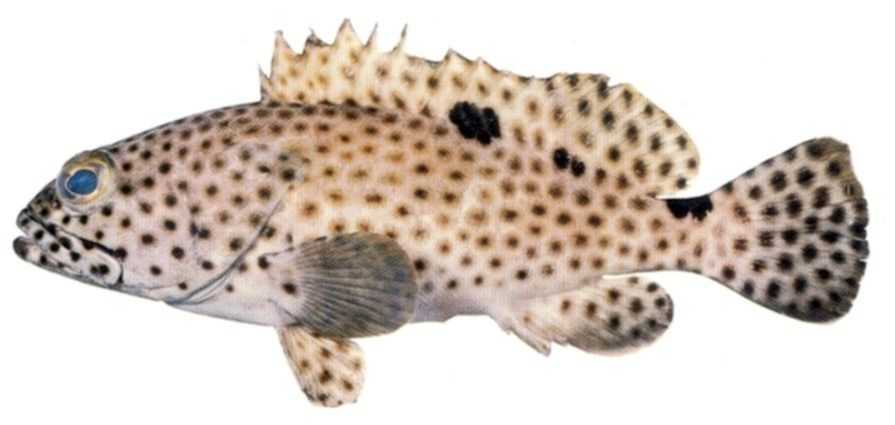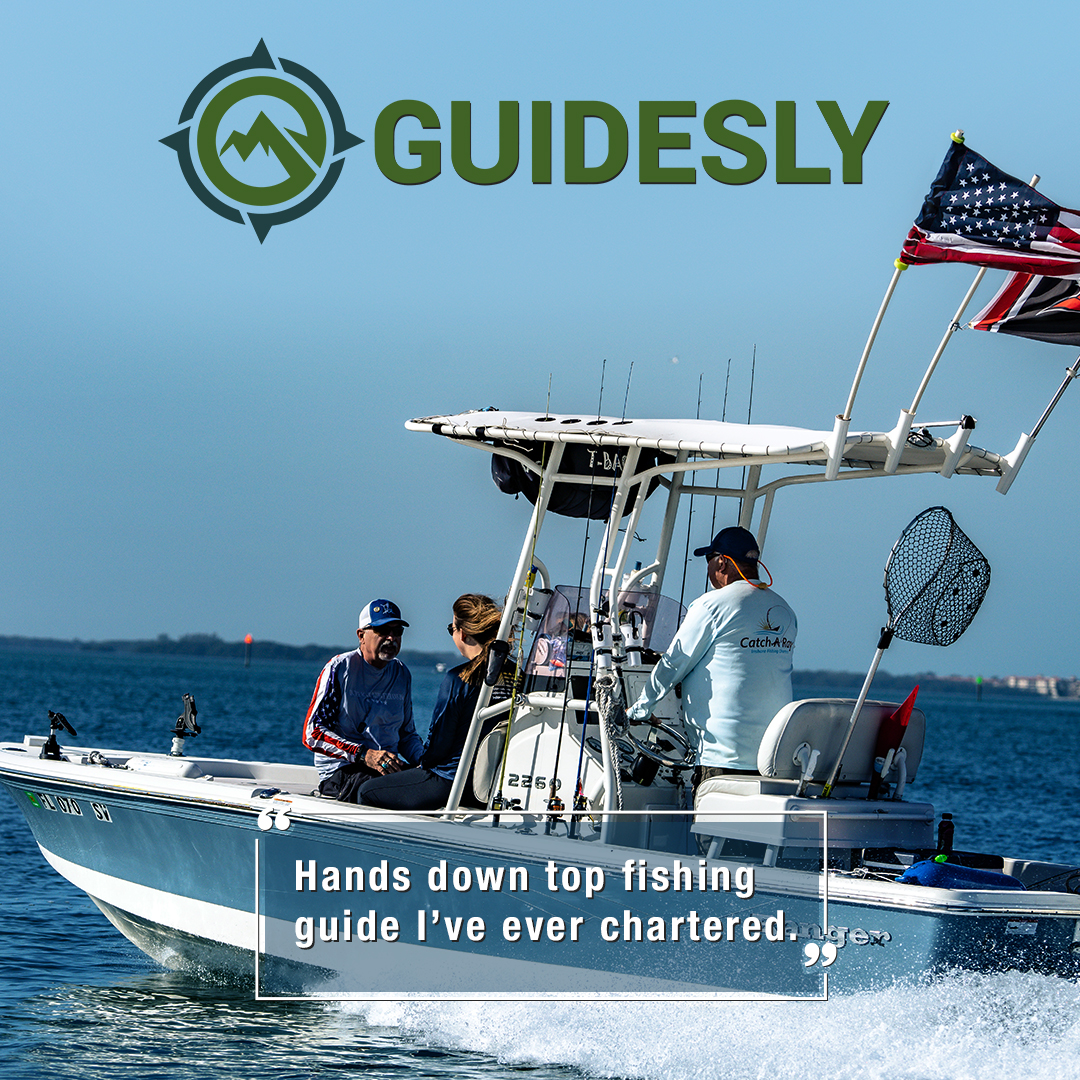Spotted Grouper

Species Details
Epinephelus Analogus
Serranidae
Perciformes
Patch Reefs, Lagoons (younger), Rocky Reefs
10 - 49 lbs.
18" - 45"
Spotted Grouper (Epinephelus analogus) Description
The Spotted Grouper is a member of the Grouper family that’s known for its spots. It also has other names such as the Spotted Cabrilla or the Rock Bass. Color-wise, the Spotted Grouper has a pale red-brown mix while it’s covered with a lot of brass-brown spots. The Spotted Grouper also appears to have wavy blue stripes across its olive-gold face.
The Spotted Grouper’s tailfin is a shallow-v but has rounded edges. Its dorsal fin and anal fin run parallel to each other. However, the Spotted Grouper’s anal fin takes on the color of its underbelly, making it appear more copper brown. Whereas, the dorsal fin is on the blue-yellow green side. It has short pectoral fins which are a few centimeters away from its gills.
On their bodies, they have dark vertical bands that run down their body. However, the dark color fades upon reaching their belly.
Diet and Size
Spotted Groupers love feeding near sandy substrates. Usually, their food of choice includes the red crabs that stay on the surface. They also have a preference for fishes and crustaceans but usually, only those that stay in rocky areas. Spotted Groupers are known to be quite predatory especially when it comes to their food.
Spotted Groupers can grow to a maximum size of 45 inches. Unfortunately, there appears to be no recorded average length. Possibly due to the fact that the Spotted Grouper is also a deep dweller. Since they’re deep dwellers, it’s hard to find fishes like them in a normal size. They have a maximum weight of 49 lbs.
Interesting Facts about the Spotted Grouper
- Spotted Groupers are quite poorly studied. Most of the time, they are ignored in favor of the other Groupers.
- Spotted Groupers appear to change their diet depending on the day. In the evening, Spotted Groupers eat crustaceans whereas they eat small fish in the day.
- They’re a predatory type of Grouper.
- While young, a Spotted Grouper’s color is more vibrant.
- The dorsal fin of the Spotted Grouper appears to have two kinds of textures: a spiky texture and a smooth, rounded texture.
- The spots of the Spotted Grouper reach all the way to the tail.
- Spotted Groupers may sometimes be mistaken for Starry Groupers.
- However, there is a difference. Spotted Groupers have dark accents but light backgrounds. Whereas, the Starry Grouper has light accents but dark bodies.
- They are excellent for food and may end up being overfished.
Spotted Grouper – Fishing Techniques: How to Fish for a Spotted Grouper
When catching a Spotted Grouper, the first thing you look for is rocky substrates. Or, you can also find a place where it’s full of pelagic red crabs. Red crabs are a Spotted Grouper’s favorite things to eat. However, you also have to check what time of the day you’re fishing in. At night, that’s when they prefer crustaceans. In the morning, they’re going to prefer some fish.
With that in mind, you have to match the bait. In the morning, anglers say that a live sardine will do the trick in luring it out. Make sure also your line is quite strong and doesn’t easily snap upon getting snagged. Like any Grouper, it does have a preference for rocky areas. Because of that, your line will definitely be prone to snapping. This grouper isn’t the size of an anchovy either which means you’re going to need a test line that can at least handle 50 lbs.
Spotted Groupers are also ambush-type fishes. They’ll ambush whatever they see is a good meal. So, letting your sardine float on by to attract it. Once it snaps, lead it along until you get it close enough for you to reel properly. Some say that the best way to bring it up is to use a trolling plug. That way, it gives you a chance to make it think that its food is getting away.
Habitat and Distribution
Spotted Groupers were mostly seen along the Eastern Pacific Ocean. They like rocky areas and places where crustaceans love to hide. Some people mentioned that they are more prominent in Mexican waters. One of the areas that have a lot of Spotted Grouper is a place known as La Paz. It’s close to Muertos and is in the Punta Perico area.
They also have a tendency to stay in patch reefs. Younger Spotted Groupers stay in tidal pools and lagoons.







